Gallery Network
Krieger x Koukjian Team Up for a Private Museum Uniting Jewelry and Sculpture in the ‘City of Gems’
Pierre and Cedric Koukjian are collaborating with Andreas Krieger of Hans D. Krieger in new bespoke exhibition space.
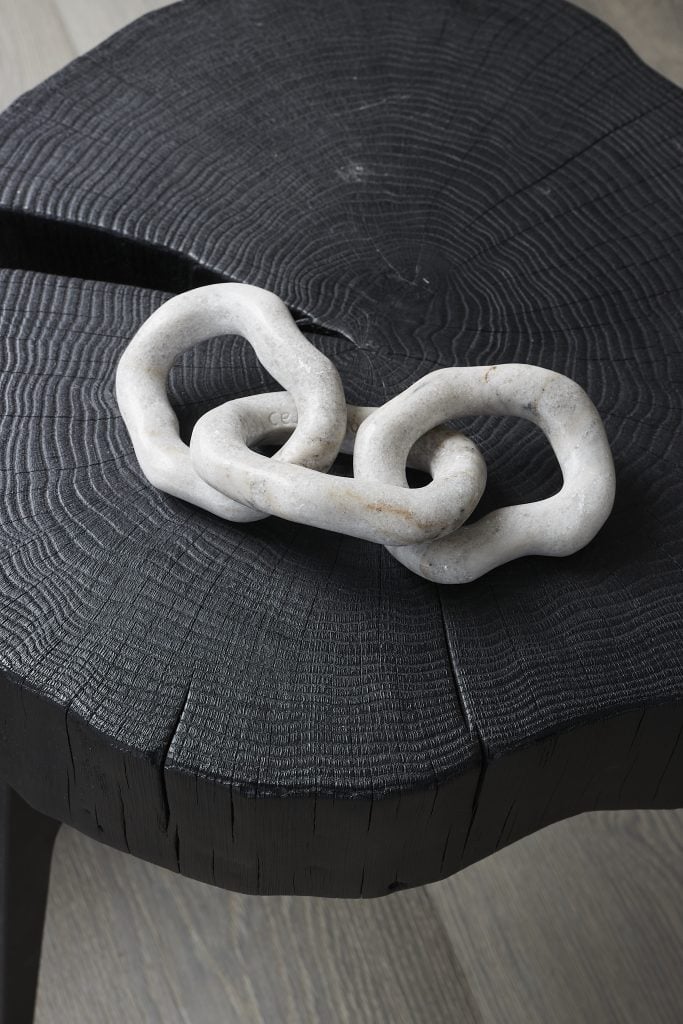
Pierre and Cedric Koukjian are collaborating with Andreas Krieger of Hans D. Krieger in new bespoke exhibition space.

Artnet Gallery Network

Father and son design studio Pierre and Cedric Koukjian have become widely recognized for their postmodern, industrial-inspired sculptures—which range from pedestal size to monumental scale. Recently announced, the duo has teamed up with Andreas Krieger, the leading force behind the jewelry house Hans D. Krieger, for Krieger x Koukjian, a collaboration that sees a new private museum space in the town of Idar-Oberstein, Germany, a major gemstone and jewelry center colloquially referred to as the “City of Gems.”
Bringing together a dazzling array of fine jewelry and a selection of the Koukjian’s vanguard sculptures, Krieger x Koukjian blurs the line between the two art forms, offering new perspectives on each and showcasing how the two intersect.
We spoke with Andreas Krieger, Pierre Koukjian, and Cedric Koukjian to find out more about the catalyst behind this new collaboration, and what their vision is for this singular project.
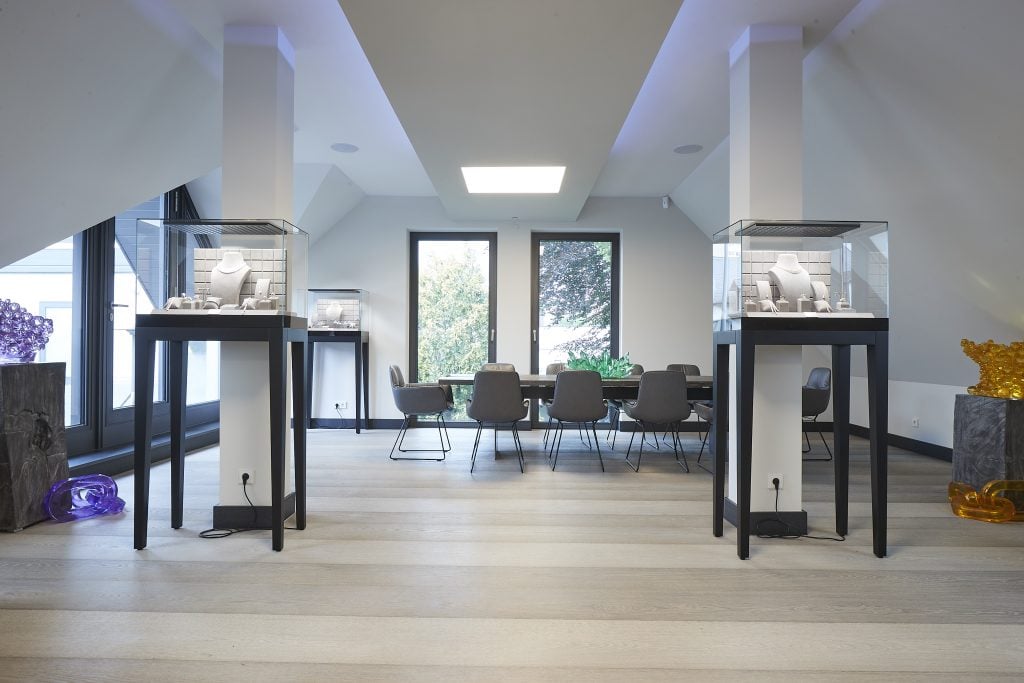
Krieger x Koukjian. Photo: Volker Renner. Courtesy of Andreas Krieger.
Tell us about your connection with Andreas Krieger—when did you first meet and what led to wanting to collaborate?
Pierre Koukjian: We first met in Basel in the ’80s. It was a time of exploration and innovation in both our fields. Our shared passion for merging the worlds of jewelry and sculpture brought us together. We started collaborating on various projects that fused these two forms, such as sculptures made with precious gold and stones.
Cedric Koukjian: There was an immediate recognition of the potential to create something unique by combining our expertise. Our collaboration was driven by a mutual desire to push the boundaries of traditional craftsmanship and artistic expression.
Andreas Krieger: From the moment we met, it was clear that we had a shared vision. The idea of blending jewelry with sculptural art was both exciting and challenging, and it felt natural to work together to explore this innovative approach.
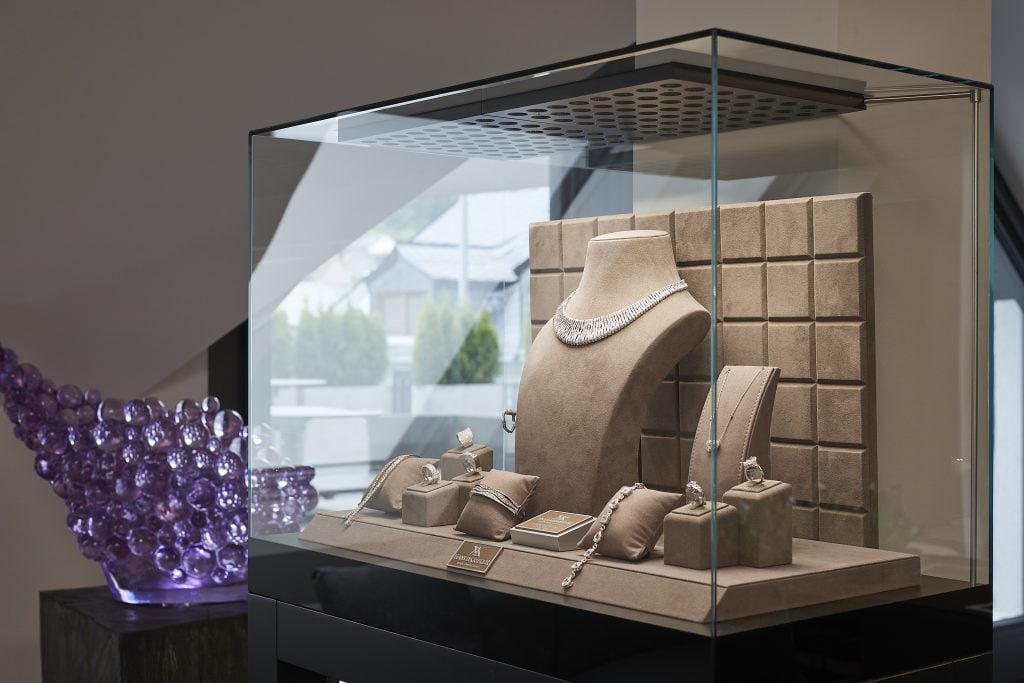
Krieger x Koukjian. Photo: Volker Renner. Courtesy of Andreas Krieger.
Did you Krieger initially envisioned this type of collaboration within this new space? Was this part of the inspiration behind inaugurating his own museum?
AK: The concept of blending jewelry and art has always been intriguing to me. Creating this museum was a way to showcase this unique intersection and to present jewelry in a new light. The collaboration with Pierre and Cedric was a key part of this vision, as their sculptures complement and enhance the beauty of the jewelry pieces.
PK: Andreas had a clear vision for the museum from the beginning. He wanted to create a space where the lines between jewelry and art are blurred, allowing visitors to appreciate the craftsmanship and creativity involved in both.
CK: The museum was inspired by the idea of integrating different art forms. Andreas saw the potential to create a dialogue between jewelry and sculpture, and our collaboration was a natural extension of this vision.
How do you see fine jewelry fitting within the greater scope of fine art?
PK: Fine jewelry is undoubtedly a form of fine art. Many great artists like Dürer, Lalanne, Dalí, and Picasso have created jewelry, further blurring the line between jewelry and sculpture. Jewelry is often considered a form of decorative art. Just like a painting or sculpture, a piece of jewelry can tell a story and evoke emotions.
CK: Jewelry, much like other art forms, requires a high level of skill and creativity. It’s a form of decorative art that can stand alone as a work of beauty. In museums, jewelry is often displayed as part of the art collection, highlighting its artistic value.
AK: Fine jewelry fits seamlessly within the scope of fine art. It embodies the same principles of design, craftsmanship, and aesthetic appeal. Each piece is a miniature sculpture, a wearable piece of art.
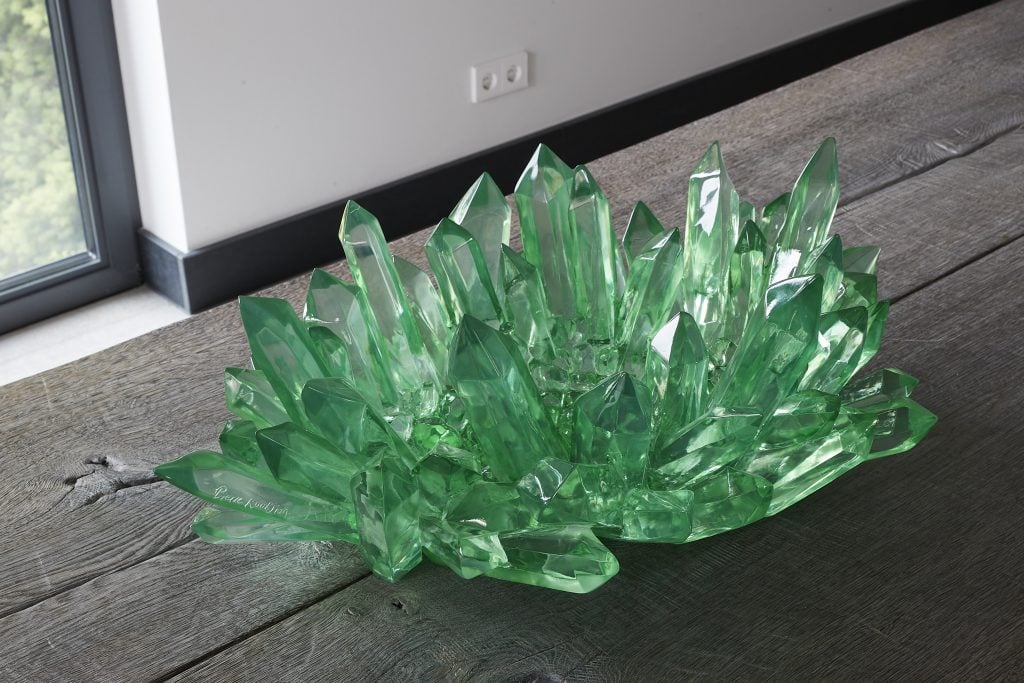
Krieger x Koukjian. Photo: Volker Renner. Courtesy of Andreas Krieger.
What crossroads or overlaps do you see between jewelry and art? Do you find parallels between your own practice and the practice of creating jewelry?
PK: There are many overlaps between jewelry and art. Both require meticulous attention to detail and a deep understanding of materials and techniques. In my practice, I often draw parallels between creating a sculpture and designing a piece of jewelry.
CK: The creative process for both jewelry and art starts with an idea and a sketch. Whether it’s a sculpture or a piece of jewelry, the journey from concept to completion involves similar stages of development, from designing to refining the final piece.
AK: The craftsmanship involved in both fields is remarkably similar. Techniques like polishing, cutting stones, and metalwork are fundamental to both jewelry and sculpture. These skills have been refined over centuries and are essential to creating beautiful, lasting works of art.
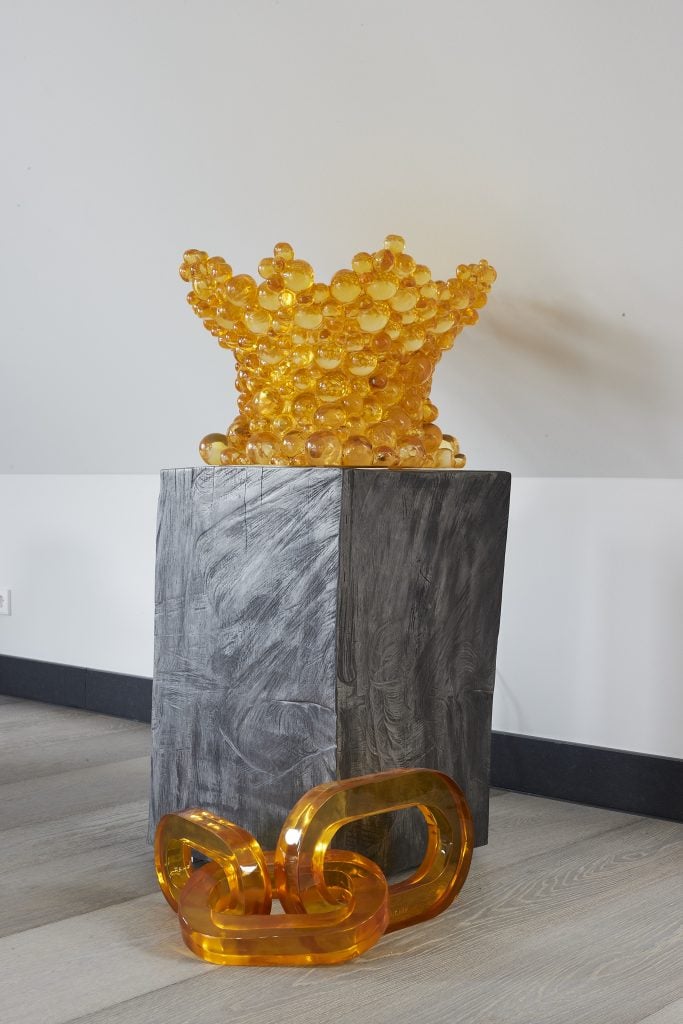
Krieger x Koukjian. Photo: Volker Renner. Courtesy of Andreas Krieger.
With this in mind, could you ever see yourself creating jewelry as part of your practice in the future? What would it look like?
PK: Absolutely. Creating jewelry would be an exciting extension of my practice. I imagine designing pieces that are both wearable and sculptural, incorporating elements of my artistic style and using unconventional materials to push the boundaries of traditional jewelry design.
CK: I can definitely see the potential for creating jewelry. It would be an interesting challenge to translate my sculptural concepts into smaller, wearable forms. The jewelry would likely reflect the same bold and innovative approach that characterizes my sculptures.
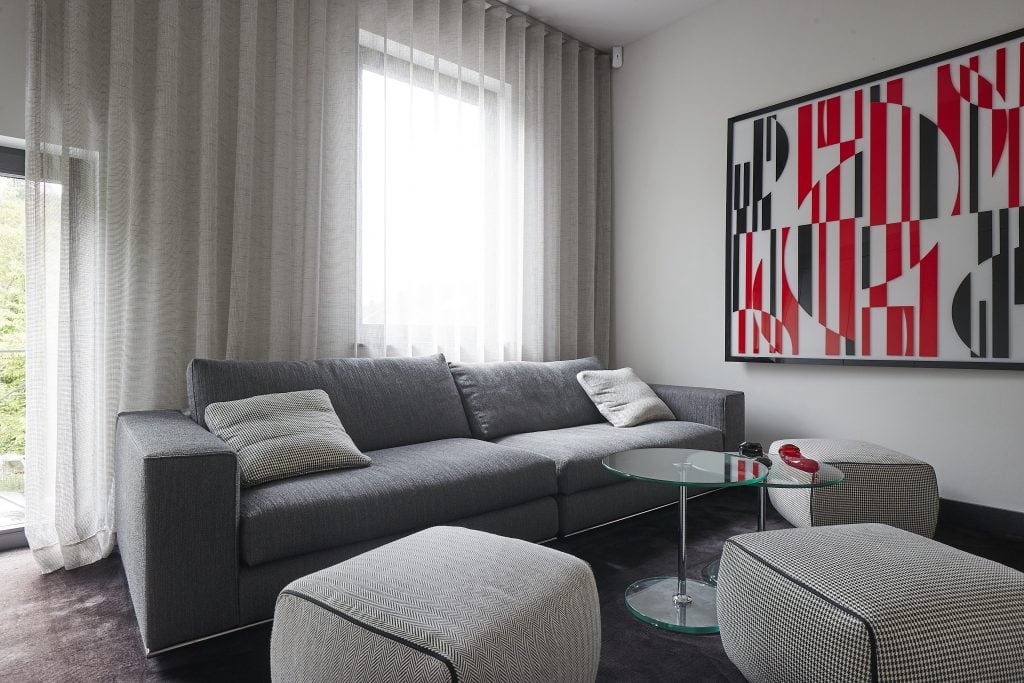
Krieger x Koukjian. Photo: Volker Renner. Courtesy of Andreas Krieger.
What do you hope visitors and viewers of this collaboration and the juxtapositions between your work and the jewelry displays take away with them?
PK: I hope visitors leave with a deeper appreciation for the artistry involved in both jewelry and sculpture. I want them to see how these two forms can complement and enhance each other, creating a richer, more immersive experience.
CK: I want viewers to understand that jewelry is more than just an accessory; it’s a form of art that deserves recognition and admiration. The collaboration with Krieger showcases the beauty and complexity of both disciplines.
AK: I hope that visitors come away with a new perspective on jewelry and art. By presenting them together, we aim to highlight the craftsmanship and creativity that goes into each piece, whether it’s a sculpture or a piece of jewelry. We want to inspire people to see the beauty in the details and the artistry in everyday objects.